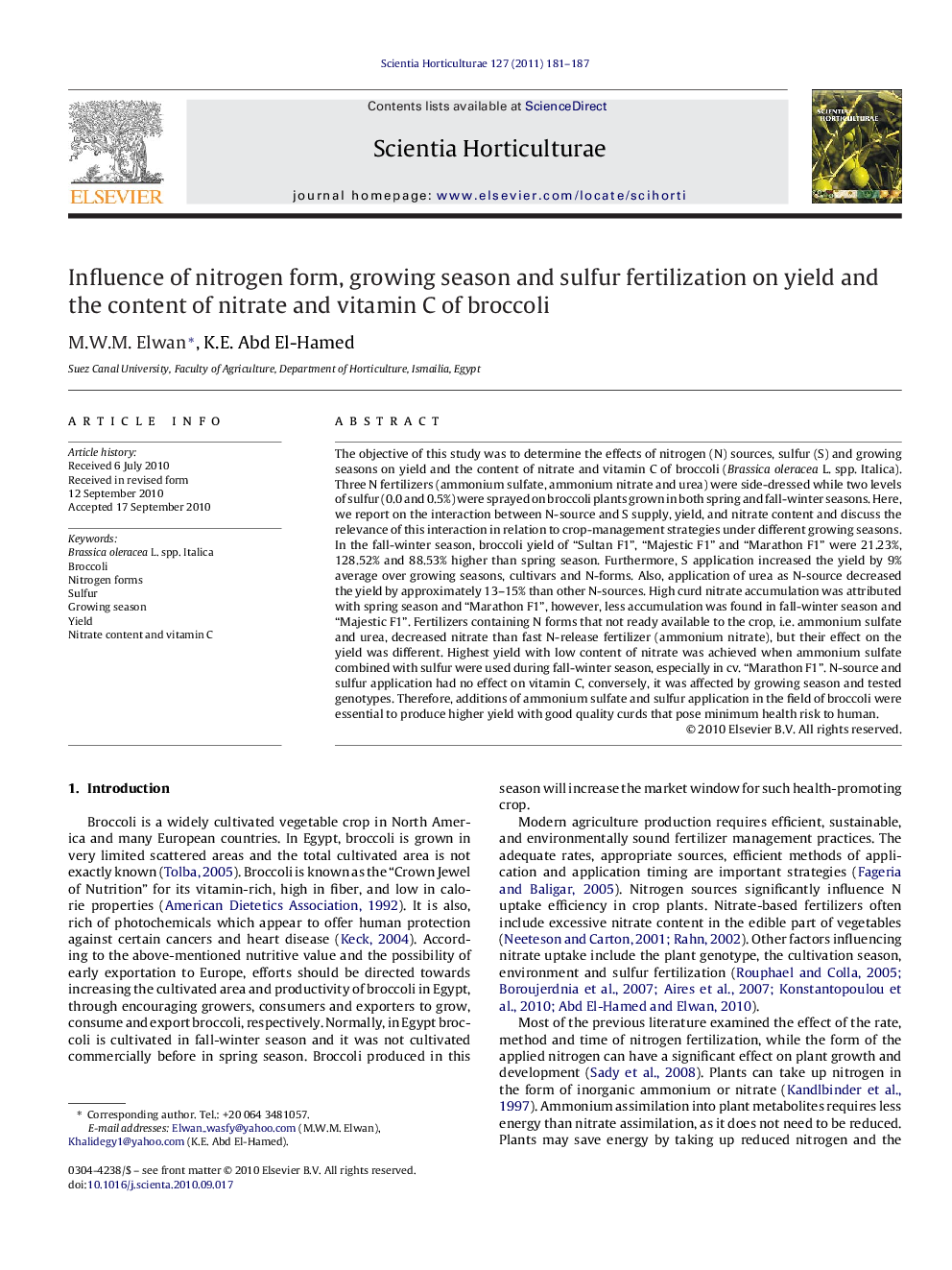| کد مقاله | کد نشریه | سال انتشار | مقاله انگلیسی | نسخه تمام متن |
|---|---|---|---|---|
| 4568145 | 1331289 | 2011 | 7 صفحه PDF | دانلود رایگان |

The objective of this study was to determine the effects of nitrogen (N) sources, sulfur (S) and growing seasons on yield and the content of nitrate and vitamin C of broccoli (Brassica oleracea L. spp. Italica). Three N fertilizers (ammonium sulfate, ammonium nitrate and urea) were side-dressed while two levels of sulfur (0.0 and 0.5%) were sprayed on broccoli plants grown in both spring and fall-winter seasons. Here, we report on the interaction between N-source and S supply, yield, and nitrate content and discuss the relevance of this interaction in relation to crop-management strategies under different growing seasons. In the fall-winter season, broccoli yield of “Sultan F1”, “Majestic F1” and “Marathon F1” were 21.23%, 128.52% and 88.53% higher than spring season. Furthermore, S application increased the yield by 9% average over growing seasons, cultivars and N-forms. Also, application of urea as N-source decreased the yield by approximately 13–15% than other N-sources. High curd nitrate accumulation was attributed with spring season and “Marathon F1”, however, less accumulation was found in fall-winter season and “Majestic F1”. Fertilizers containing N forms that not ready available to the crop, i.e. ammonium sulfate and urea, decreased nitrate than fast N-release fertilizer (ammonium nitrate), but their effect on the yield was different. Highest yield with low content of nitrate was achieved when ammonium sulfate combined with sulfur were used during fall-winter season, especially in cv. “Marathon F1”. N-source and sulfur application had no effect on vitamin C, conversely, it was affected by growing season and tested genotypes. Therefore, additions of ammonium sulfate and sulfur application in the field of broccoli were essential to produce higher yield with good quality curds that pose minimum health risk to human.
Research highlights▶ Cultivation of made and late maturity broccoli cultivars in fall-winter season produced high yield with low nitrate content. ▶ There is a slightly difference between spring and fall-winter seasons regarding the yield when early broccoli cultivar was used. ▶ Nitrate accumulated less when broccoli grown in fall-winter season. ▶ Fertilization with ammonium sulfate with sulfur application produced high yield with low nitrate content. ▶ High vitamin C was attributed with the fall-winter season. ▶ It could be for the first time to cultivate broccoli in Egypt under spring condition to prolong it expectance in the market.
Journal: Scientia Horticulturae - Volume 127, Issue 3, 10 January 2011, Pages 181–187